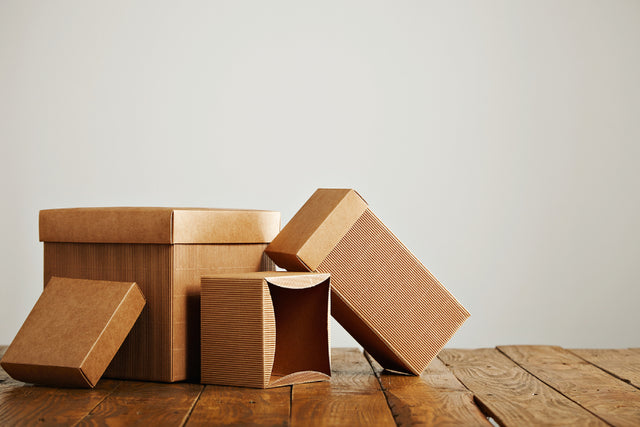A Beginner’s Comprehensive Guide to Custom Packaging
Custom packaging is a powerful tool for businesses looking to differentiate their products and enhance their brand identity. Whether you’re a small startup or an established company, investing in custom packaging can significantly impact your brand’s perception and customer experience. This comprehensive guide will walk you through everything you need to know about custom packaging, from its benefits to the process of creating it.
What is Custom Packaging?
Custom packaging refers to packaging that is specifically tailored to fit a product’s dimensions, design, and brand identity. Unlike generic packaging, custom packaging is unique to each brand and product, offering a personalised and professional look.
Benefits of Custom Packaging
Custom packaging offers numerous advantages for businesses of all sizes. Here are some key benefits:
1. Brand Recognition
Custom packaging helps create a strong brand identity. By incorporating your brand’s colours, logo, and design elements, custom packaging makes your products instantly recognisable. This consistency in branding reinforces your brand’s presence in the market and fosters customer loyalty.
2. Enhanced Customer Experience
The unboxing experience is a crucial part of the customer journey. Custom packaging can make this experience memorable and enjoyable. Thoughtful packaging design can surprise and delight customers, encouraging them to share their experiences on social media and recommend your brand to others.
3. Product Protection
Custom packaging is designed to fit your product perfectly, providing better protection during shipping and handling. This reduces the risk of damage and ensures that your product reaches the customer in perfect condition. Custom inserts and dividers can also be included to add extra layers of protection.
4. Eco-Friendly Options
Many custom packaging solutions are available in eco-friendly materials. By choosing sustainable options, you can reduce your environmental impact and appeal to eco-conscious consumers. Eco friendly packaging not only benefits the planet but also enhances your brand’s reputation.
Types of Custom Packaging
There are various types of custom packaging to choose from, depending on your product and brand needs. Here are some popular options:
1. Custom Boxes
Custom boxes are versatile and can be designed in various shapes, sizes, and materials. Whether you need a sturdy carton box for shipping or an elegant box for retail display, custom boxes can be tailored to your specific requirements. In other words, a custom box in Singapore can offer a wide range of options to suit your needs.
2. Custom Bags
Custom bags are ideal for retail and promotional purposes. They can be made from paper, plastic, or fabric, and designed with your brand’s logo and colours. Custom bags are reusable, providing ongoing brand exposure every time they are used.
3. Custom Labels and Stickers
Custom labels and stickers are a cost-effective way to brand your packaging. They can be used on boxes, bags, and other packaging materials to add a personalised touch. Customised sticker printing in Singapore can create high-quality stickers that reflect your brand’s identity.
How to Create Custom Packaging
Creating custom packaging involves several steps. Here’s a step-by-step guide to help you get started:
1. Define Your Packaging Needs
Start by understanding your product’s packaging requirements. Consider the size, shape, and fragility of your product, as well as your branding goals. Determine the type of packaging that best suits your needs, whether it’s a custom box, bag, or label.
2. Choose the Right Materials
Select materials that align with your brand values and product requirements. Consider eco-friendly packaging options to appeal to environmentally conscious consumers. The choice of materials will also impact the durability and cost of your packaging.
3. Design Your Packaging
Work with a designer or use online tools to create your packaging design. Incorporate your brand’s colours, logo, and other design elements to create a cohesive and attractive look. Ensure that the design is functional and provides all necessary information, such as product details and usage instructions.
4. Select a Packaging Supplier
Partner with a reliable packaging supplier to produce your custom packaging. Look for a supplier with experience in your industry and the ability to meet your quality and quantity requirements. A good supplier will also offer guidance and support throughout the process.
5. Production and Delivery
Once the design and materials are finalised, proceed with production. Coordinate with your supplier to ensure timely delivery of your custom packaging. Monitor the production process to maintain quality control and address any issues promptly.
Conclusion
Custom packaging is an essential aspect of modern branding, offering a multitude of benefits from enhanced brand recognition to improved customer experience. By following the steps outlined in this guide, you can create custom packaging that not only protects your products but also elevates your brand in the eyes of your customers.
For businesses looking to implement high-quality custom packaging solutions, partnering with a reliable provider is key. Whether you need custom boxes, eco-friendly packaging, or customised sticker printing in Singapore, Packink offers comprehensive solutions to meet all your packaging needs.
Contact us today to explore how we can help you create exceptional custom packaging that stands out in the market.


0 Comments
There are no comments for this article. Be the first one to leave a message!